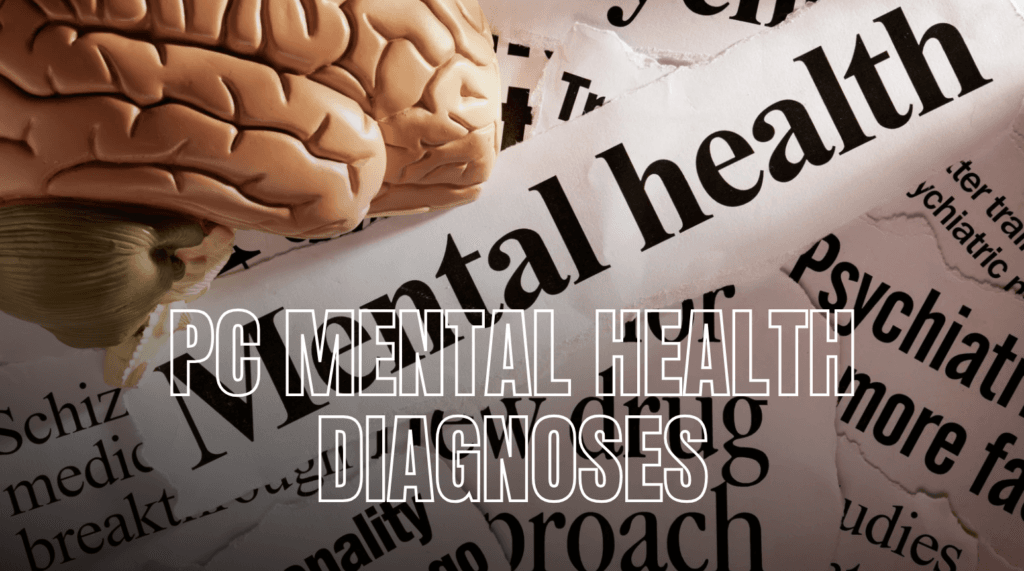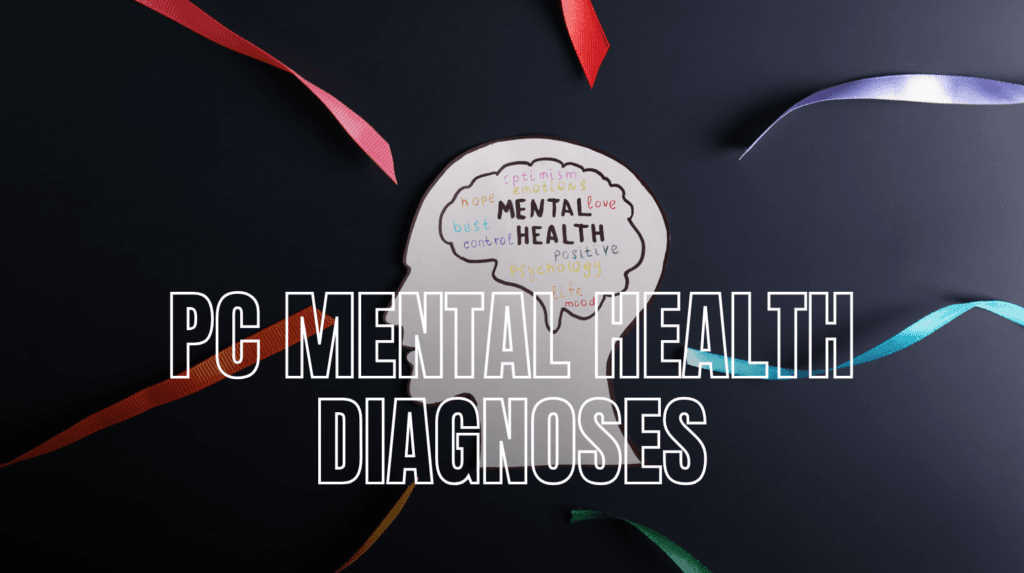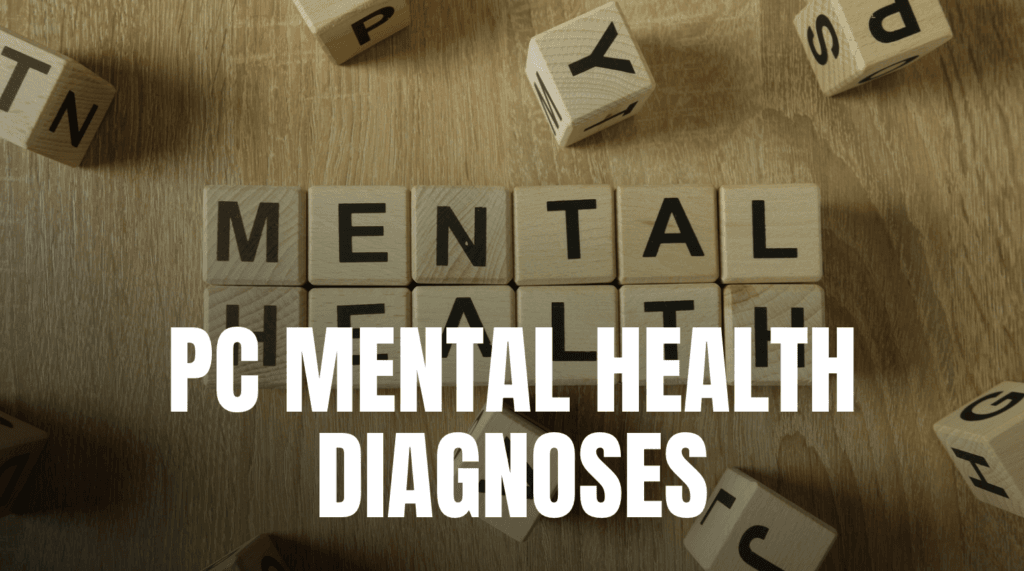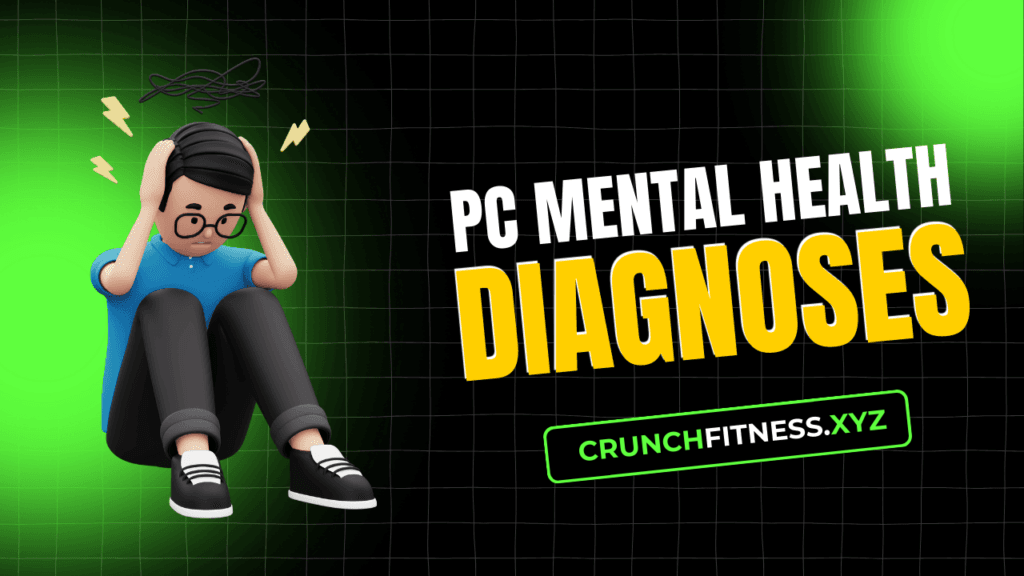As the world becomes increasingly digital, PC mental health diagnoses are on the rise, impacting individuals who spend extended hours in front of their screens. Conditions such as Computer Vision Syndrome, Gaming Disorder, and Internet Addiction Disorder are just a few examples of how prolonged computer use can affect mental and physical health.
Understanding the symptoms, causes, and prevention strategies for these disorders is crucial for maintaining well-being in our technology-driven society. This guide will explore these conditions and offer practical solutions to manage them effectively.
Understanding PC Mental Health Diagnoses

The rise of digital technology and the increasing time spent in front of screens has led to a surge in PC mental health diagnoses. From Computer Vision Syndrome (CVS) to Internet Addiction Disorder (IAD), these conditions affect a wide range of people. The significance of early diagnosis and proper treatment cannot be overstated.
Understanding the risks, symptoms, and preventive measures is crucial in safeguarding your mental and physical well-being. This article delves into the top PC mental health diagnoses, highlighting their effects and offering actionable steps to mitigate their impact.
7 PC Mental Health Diagnoses

1. Computer Vision Syndrome (CVS)
Computer Vision Syndrome (CVS) is a common condition among individuals who spend extensive hours in front of a computer screen. It is primarily caused by the constant exposure to digital screens, which can lead to eye strain, blurred vision, headaches, and neck pain. Symptoms are worsened by poor posture and inadequate screen setup.
Those affected may experience persistent discomfort and find it challenging to focus or perform tasks effectively. Preventing CVS involves taking regular breaks, following the 20-20-20 rule, adjusting screen settings, and ensuring ergonomic workstation setups to minimize strain.
2. Gaming Disorder
Gaming Disorder is a behavioral condition characterized by excessive gaming that interferes with daily activities and responsibilities. This disorder is recognized by the World Health Organization as a mental health issue and can severely impact an individual’s social and professional life.
People with this disorder often experience withdrawal symptoms when they cannot access games and may use gaming as a means of escape. The main solution for managing gaming disorder involves limiting gaming time, engaging in real-world activities, and seeking therapy or counseling for underlying emotional issues that contribute to the addiction.
3. Cyberbullying-Related Anxiety
Cyberbullying-related anxiety is a growing concern in the digital age, where individuals face harassment, threats, and negative behaviors online. The anxiety caused by cyberbullying can manifest in various ways, including feelings of fear, depression, and isolation. Victims may withdraw from social interactions, avoid certain online platforms, or experience a constant state of vigilance.
To combat this, it’s crucial to report online harassment, seek support from trusted individuals, and practice mindfulness techniques to manage the emotional impact. Professional help may also be necessary in severe cases to reduce anxiety and restore emotional balance.
4. Internet Addiction Disorder (IAD)
Internet Addiction Disorder (IAD) is characterized by compulsive internet use that negatively impacts an individual’s personal, social, and professional life. This disorder often leads to a loss of control over internet usage, neglect of daily responsibilities, and social withdrawal. The constant need to stay online for entertainment, social interaction, or escape can worsen IAD.
Managing IAD involves setting clear boundaries for internet use, engaging in offline activities, and considering behavioral therapy to address underlying causes such as depression or anxiety. A balanced approach is key to avoiding dependency on the internet.
5. Sedentary Behavior-Related Depression
Sedentary behavior-related depression occurs when prolonged sitting, especially in front of a computer, leads to depressive symptoms. Lack of physical activity, coupled with the isolation of screen time, can create a cycle of negative emotions, low energy, and lack of motivation. People who are sedentary for long periods often experience difficulty concentrating, sleep disturbances, and increased feelings of sadness.
To combat this, incorporating regular physical activity, socializing offline, and maintaining a balanced routine can significantly improve mental health and reduce the risks associated with sedentary lifestyles.
6. Social Media Anxiety
Social media anxiety is a psychological condition that affects individuals who experience stress, insecurity, and pressure from constant engagement on social media platforms. The need to maintain a certain online persona, fear of missing out (FOMO), and negative social comparisons can trigger feelings of inadequacy and anxiety. Also, Those affected may struggle with self-esteem issues, which can lead to a diminished sense of well-being.
Reducing social media exposure, focusing on positive online interactions, and practicing self-care strategies are essential steps to manage social media anxiety.
7. Sleep Disorders Due to PC Use
Sleep disorders due to PC use are becoming increasingly common, especially among individuals who use their computers late at night. Also, The blue light emitted by screens interferes with the body’s production of melatonin, a hormone essential for regulating sleep. As a result, people may struggle with falling asleep, experience disrupted sleep cycles, and feel fatigued the next day.
Creating a peaceful, tech-free environment before sleep can enhance overall health and well-being.
Pros And Cons of PC Mental Health Diagnoses
Solutions for Addressing PC Mental Health Diagnoses

Each of the PC mental health diagnoses mentioned in this article can significantly impact an individual’s life, but there are effective ways to manage and mitigate their effects. It is important to take proactive steps to minimize the risks associated with prolonged screen time. Taking regular breaks, setting boundaries, practicing mindfulness, and seeking professional help when needed are crucial steps toward maintaining a balanced and healthy lifestyle in a screen-dominated world.
Final Thoughts
PC mental health diagnoses are a growing concern in our digital age, affecting many individuals who spend prolonged hours in front of screens. Conditions like Computer Vision Syndrome, Gaming Disorder, and Internet Addiction Disorder can significantly impact both mental and physical health. By recognizing the symptoms early and implementing preventive strategies, individuals can maintain better well-being.
Prioritizing breaks, reducing screen time, and seeking professional help when necessary can help mitigate these conditions, promoting a healthier balance between technology use and mental health.
FAQs About PC Mental Health Diagnoses
What are the main symptoms of Computer Vision Syndrome (CVS)?
CVS symptoms include dry eyes, blurred vision, headaches, neck pain, and eye strain due to prolonged screen time.
How can prolonged screen time affect mental health?
Prolonged screen time can lead to anxiety, depression, eye strain, sleep disturbances, and decreased physical activity.
What steps can I take to prevent Cyberbullying-related anxiety?
Report harmful behavior, set privacy settings on social media, seek support from loved ones, and practice stress management techniques.
How do I know if I have Internet Addiction Disorder (IAD)?
Signs include preoccupation with the internet, withdrawal symptoms when offline, neglect of offline responsibilities, and using the internet to escape real-life issues.
What impact does Gaming Disorder have on relationships and work life?
Gaming Disorder can lead to social isolation, decreased productivity at work or school, and strained relationships due to excessive gaming time.
Can Sedentary Behavior-related Depression be treated with exercise?
Yes, regular physical activity can improve mood, reduce fatigue, and combat the negative effects of long periods of sitting and inactivity.
What is the connection between social media use and anxiety?
Excessive social media use can cause anxiety through social comparisons, fear of missing out (FOMO), and the pressure to maintain an idealized online persona.
How can I improve my sleep patterns after excessive screen use?
Reduce screen time before bed, use blue light filters, establish a bedtime routine, and avoid stimulating content to improve sleep quality.
Is it possible to recover from Internet Addiction Disorder on my own?
While some self-management strategies can help, seeking professional support is often recommended for long-term recovery from IAD.
What mental health conditions are linked to prolonged computer use?
Conditions include Computer Vision Syndrome, Gaming Disorder, Cyberbullying-related anxiety, Internet Addiction Disorder, and Sedentary Behavior-related Depression.

